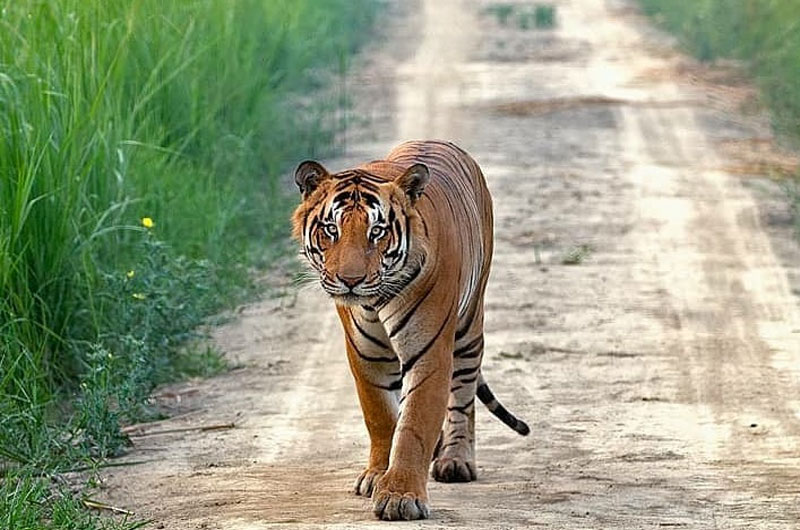
Dudhwa National Park: Preserving the Wilderness of Uttar Pradesh
Dudhwa National Park, nestled in the foothills of the Himalayas in the Lakhimpur-Kheri district of Uttar Pradesh, India, is a haven for diverse wildlife and rich biodiversity. Spanning across an area of approximately 490 square kilometers, the park is renowned for its dense forests, grasslands, and swampy marshes that provide a perfect habitat for a variety of endangered species. This guide provides an insightful overview of Dudhwa National Park, highlighting its specialties, locality, best time to visit, and nearby amenities.
Overview of Dudhwa National Park
Location and Geography
- Locality: Lakhimpur-Kheri district, Uttar Pradesh, India
- Geographical Features:
- Situated on the Indo-Nepal border
- Comprises dense sal forests, grasslands, and wetlands
- Part of the Terai ecosystem, characterized by tall grasslands and marshes
Specialty
- Wildlife Sanctuary:
- Home to significant populations of Bengal tigers, Indian rhinoceros, and swamp deer (barasingha)
- Rich in avian diversity with over 400 species of birds
- Conservation efforts focused on protecting endangered species and their habitats
Best Time to Visit
- Optimal Seasons: November to May
- Weather Conditions:
- Winter (November to February): Cool and pleasant, ideal for wildlife sightings
- Summer (March to May): Hot, with better chances of spotting wildlife near water sources
- Monsoon (June to September): Park remains closed due to heavy rains and breeding season
Wildlife and Flora
Fauna
- Mammals:
- Bengal tiger
- Indian rhinoceros
- Swamp deer (barasingha)
- Asiatic elephants
- Sloth bears and leopards
- Birds:
- Greater adjutant stork
- Bengal florican
- Sarus crane
- Pallas’s fish eagle
- Various migratory birds during winter months
- Reptiles and Amphibians:
- Marsh crocodile
- Indian python
- Monitor lizard
- Various species of frogs and turtles
Flora
- Vegetation Types:
- Dense sal forests
- Mixed deciduous forests
- Open grasslands and wetlands
Zones and Activities
Main Zones
- Dudhwa Zone:
- Core area of the park
- Ideal for tiger and rhino sightings
- Offers jeep safaris and nature walks
- Sathiana and Sonaripur Zones:
- Known for birdwatching and elephant safaris
- Explore the diverse habitats of the park
Activities
- Jeep Safaris:
- Conducted in early morning and late afternoon
- Explore different zones for varied wildlife experiences
- Elephant Safaris:
- Unique way to navigate through dense forests and grasslands
- Ideal for spotting rhinos and other wildlife up close
- Bird Watching:
- Guided tours to observe resident and migratory birds
- Best spots include wetlands and forest clearings
- Nature Walks:
- Guided walks with naturalists
- Learn about the park’s flora, fauna, and conservation efforts
Nearby Restaurants and Hotels
Restaurants
- Dudhwa Restaurant:
- Located within the park premises
- Offers local cuisine and snacks
- Ideal for quick refreshments during safaris
Hotels and Lodges
- Dudhwa Tiger Reserve Lodge:
- Forest lodge offering comfortable accommodations
- Located close to the park’s entry gates
- Provides guided safaris and nature walks
- Forest Rest Houses:
- Government-run accommodations within the park
- Basic amenities with a focus on wildlife experiences
- Nearby Resorts:
- Various private resorts offering comfortable stays
- Arrange safaris and other wildlife activities
Conclusion
Dudhwa National Park stands as a testament to India’s commitment to wildlife conservation, offering visitors a glimpse into the diverse ecosystems of the Terai region. Whether you are a wildlife enthusiast, a nature photographer, or simply seeking a serene escape into nature, Dudhwa provides an unforgettable experience. Plan your visit during the optimal seasons, and explore the park’s different zones and activities to fully appreciate the natural beauty and wildlife diversity of this pristine sanctuary.
